A MESOCOSM FOR EVERY RESEARCH NEED
MESOCOSM.org is a contact point for getting information about mesocosm facilities worldwide provided by the AQUACOSM-plus project
With an Arctic Ocean in rapid change, there is an urgent scientific need to understand and predict the properties of the pelagic food web in this region. The extreme northern partner is KBML in Ny Ålesund (Partner 6). This partner provides MESOAQUA with the opportunity to test the KOSMOS system of free-floating mesocosms developed by partner IFM-GEOMAR in Kiel (Partner 2), under the extreme conditions of Kongsfjorden, West – Spitsbergen (79oN, cold water, ice-bergs, strong vertical salinity gradients, open to high waves). It will provide the project with a mesocosm setup that can be used in the analysis of climate change in the Arctic. IFM-GEOMAR also represents the strong climate-change expertise in the consortium, complementing strong biologically and ecologically oriented expertise located with other partners.
The low-salinity end of the spectrum is covered by partner UMU in Umeå, Northern Sweden (Partner 5). This also connects MESOAQUA to the Baltic, and it provides a state-of-the-art on-land facility with its newly built set of controlled mesocosm towers allowing controlled stratification. UMSC also brings in recent experience in providing PhD courses centred on the mesocosm facility.
The UiB partner in Bergen (Partner 1) has a facility that includes the possibilities for mesocosms both on land and suspended in the water. With excellent close-by laboratory and dormitory facilities, this facility has been extensively used for trans-national access. The location in coastal waters of western Norway also provides access to a fairly typical meso-haline, meso-trophic, temperate, coastal environment, excellent for most studies not focusing on extreme environments.
The mesocosm facility of the CNRS ECOLAG (Partner 3), also with both laboratory and dormitory facilities, gives access to the very different environment of a western-Mediterranean lagoon. Strongly supported by CNRS, the CNRS ECOLAG partner will also develop an alternative concept for free-floating mesocosms built on the concept of several mesocosm units attached to one platform.
While it is relatively easy to construct a mesocosm experiment inducing eutrophication, an oligotrophication experiment reducing the nutrient content in a satisfactory manner is less easy to envisage. Investigations of the oligotrophic end of the nutrient spectrum can therefore presently only be done with direct access to such water. The Eastern Mediterranean represents the extreme oligotrophic end of the spectrum in water bodies made available within MESOAQUA. With biological standing stocks and rates at the limit of standard measurement techniques, mesocosm research in oligotrophic environments requires special expertise. In MESOAQUA, such expertise is provided by partner HCMR (Partner 4).
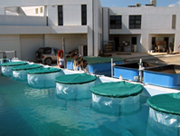
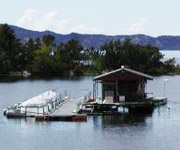
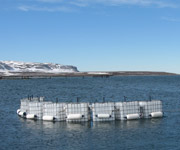
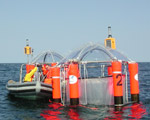
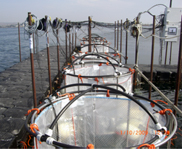
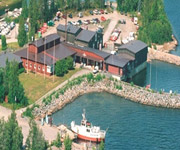
The virtual network www.mesocosm.org is a lasting result of the FP7 EU-project MESOAQUA (Network of leading MESOcosm facilities to advance the studies of future AQUAtic ecosystems from the Arctic to the Mediterranean 2009-2012). It was subsequently developed and continued under EU H2020 Project AQUACOSM (2017-2020) and AQUACOSM-plus (2020-2024). The mesocosm.org-portal specifically aims to be a tool to enhance the quality of research by facilitating international cooperative network building, announcement of new research initiatives, transfer of best practice, dissemination of knowledge, public information and press releases. As an open platform for all aquatic (marine and freshwater) ecosystem scale science research infrastructures, mesocosm.org aims to fill the lack of a centralised, coordinating network open for all interested aquatic mesocosm research facilities around the world.
